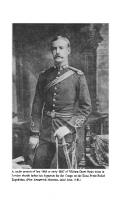Studies of the Exploits of Heracles on Vases 9781463221010
This paper discusses the tales of Heracles as told in vase-paintings, which often represent earlier or more popular vers
180 43 4MB
English Pages 30 [34] Year 2009
Recommend Papers

- Author / Uploaded
- Stephen Luce
File loading please wait...
Citation preview
Studies of the Exploits of Heracles on Vases
A n a l e c t a Gorgiana
226 Series Editor George Kiraz
Analecta Gorgiana is a collection of long essays and
short
monographs which are consistently cited by modern scholars but previously difficult to find because of their original appearance in obscure publications. Carefully selected by a team of scholars based on their relevance to modern scholarship, these essays can now be fully utili2ed by scholars and proudly owned by libraries.
Studies of the Exploits of Heracles on Vases
Stephen Luce
i gorgia* press 2009
Gorgias Press LLC, 180 Centennial Ave., Piscataway, NJ, 08854, USA www.gorgiaspress.com Copyright © 2009 by Gorgias Press LLC Originally published in All rights reserved under International and Pan-American Copyright Conventions. No part of this publication may be reproduced, stored in a retrieval system or transmitted in any form or by any means, electronic, mechanical, photocopying, recording, scanning or otherwise without the prior written permission of Gorgias Press LLC. 2009
1
ISBN 978-1-60724-455-4
ISSN 1935-6854
Extract from The A^merican Journal of Archaeology, vol. 28 (1924).
Printed in the LTnited States of America
Srcfjaeological Smstitute of America STUDIES
OF T H E
EXPLOITS
OF HERACLES
ON
VASES
I . HERACLES AND THE ERYMANTHIAN BOAR 1 THIS labor of the hero is usually regarded by ancient writers as the third which he performed for Eurystheus. 2 The vases show that it is one of the early exploits in the traditional history of the hero, and, as will be shown in the course of this article, they tell the story from beginning to end. It also figures as one of the metopes of the Temple of Zeus at Olympia. Of this I shall speak later. Our best literary sources for this labor all include with it the adventure of Heracles with the Centaur Pholus, and consequently I shall include in this article a list of the vases known to me that show this episode. The earliest reference in literature to the capture of the Erymanthian Boar that I have been able to discover is to be found in the Trac.hiniae of Sophocles,3 where the visit to Pholus and the capture of the Erymanthian Boar immediately follow the slaying of the Nemean Lion and the Hydra, in the list of his labors that Heracles there gives. Euripides in the Heracles frequently mentions the visit to Pholus 4 but strangely enough the capture of the boar is never alluded to. On the other hand this labor is the only one of the achievements of the hero that Apollonius Rhodius deems worthy of mention. 5 Of the later mythographers, the account that fits in best with the evidence of the vases is that of Diodorus Siculus,6 who mentions the fact that Eurystheus, on seeing Heracles approaching him with the boar on his shoulder, in mortal terror took refuge in a brazen jar, or pithos. We shall see that this scene is by far the most popular with the vase-painters of any in the illustration of this labor. The pithos was undoubtedly one such as have been found in such num1 I wish to express my deep indebtedness to Mr. Albert Gallatin, for kindly permitting me to publish the vases in his collection, which will appear in this and subsequent articles, thereby giving me an excuse to expand for publication several chapters of a dissertation on the labors of Heracles on vases, which was submitted to the authorities of Harvard University for the degree of Ph.D., in 1913. To Miss Gisela M. A. Richter, of the Metropolitan Museum, I owe also a debt of gratitude for her permission to republish the black-figured amphora in that Museum. The Gallatin Collection will shortly appear as a volume of the new
Corpus Vasorum Antiquorum. 2
E.g., Diodorus Siculus, IV, 12; Hyginus, fab. 30; Quintus Smyrnaeus, VI, 220: as well as Sophocles, Trachiniae, 1089 ff. 3 Vv. 1089 ff. See also the article Herakles in Roscher's Lexikon (by Furtwangler), and the article Erymanthischer Eber in Pauly-Wissowa. 1 E.g., w . 181 ff., 369-374, and 1273. 5 6
Argonautica, I, 126 ff.
IV, 12.
American Journal of Archaeology, Vol. X X V I I I (1924), No. 3.
296
LUCE: STUDIES OF EXPLOITS OF HERACLES ON VASES 297 bers a t Cnossus, and, indeed, is so represented on the vases. Apollodorus, usually our best authority for mythological subjects, is here 1 not greatly to be relied upon; for not only does he misplace the exploit and call it the fourth labor, placing the Cerynaean Stag ahead of it, but he transfers the pithos episode to the return of Heracles after slaying the Nemean Lion: for which there is no authority in any extant work of art, although on one vase-painting, a " Caeretan " hydria in the Louvre, 2 this episode is applied to the return of Heracles from Hades with Cerberus. As this vase is probably earlier than most of our Erymanthian Boar vases, it may very well be t h a t originally the legend of Eurystheus taking refuge in a pithos applied to this labor, and was later taken over by the Erymanthian Boar. Nor should we accept too seriously the evidence of a " M e g a r i a n " bowl in the Louvre, 3 upon which is the following inscription, written
above a representation of Athena giving a club to Heracles (Fig. 1): . . rod 'HpaKXeovs [ . . . . ]s TO (poTa\ov) xOLKKOVV SL8X



![The History of Greek Vases [1 ed.]
0500237808, 9780500237809](https://ebin.pub/img/200x200/the-history-of-greek-vases-1nbsped-0500237808-9780500237809.jpg)





